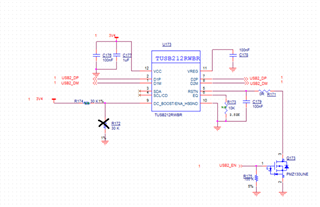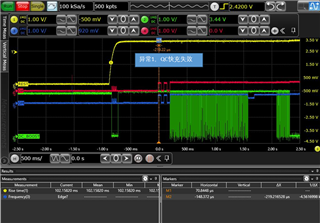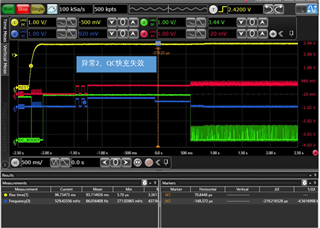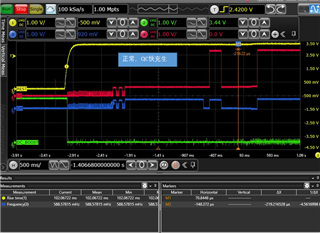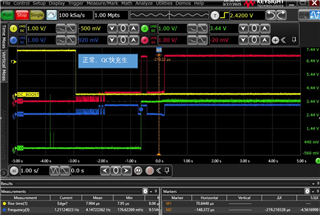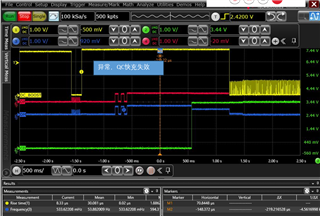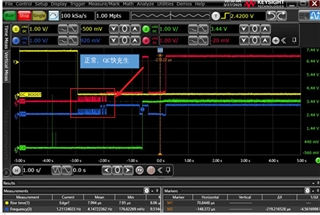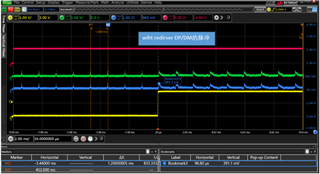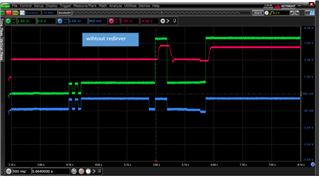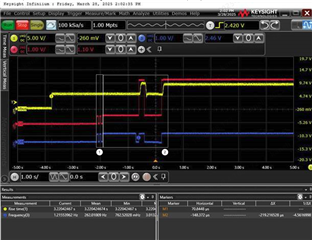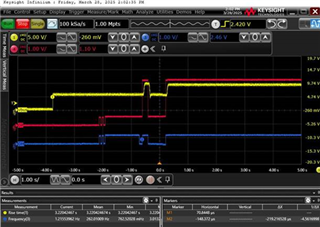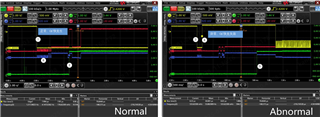Other Parts Discussed in Thread: TUSB216
Tool/software:
Dear team,
My customer find that when using TUSB212, QC charging may fail. remove TUSB212 this issue disappear.
In QC charging, DM need to be pulled below 0.4V as in red circle below:
Passed case:
Red DP- After TUSB212
Yellow DP Before TUSB212
Blue DM after TUSB212
Green DM before TUSB212
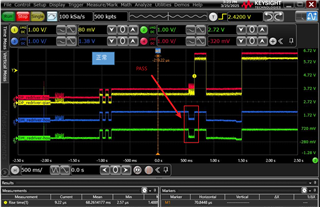
However, in failed case, DM cannot be drive below 0.4V:
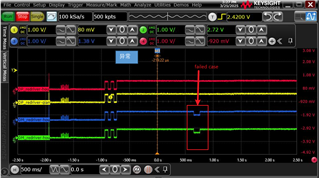
Customer remove TUSB212 and tested 100 times, no such issue. happens on very unit they built.
Will TUSB212 add additional resistance on line so the drive strength is not enough? Please hep to check on this issue.
Thank you.
Charles


